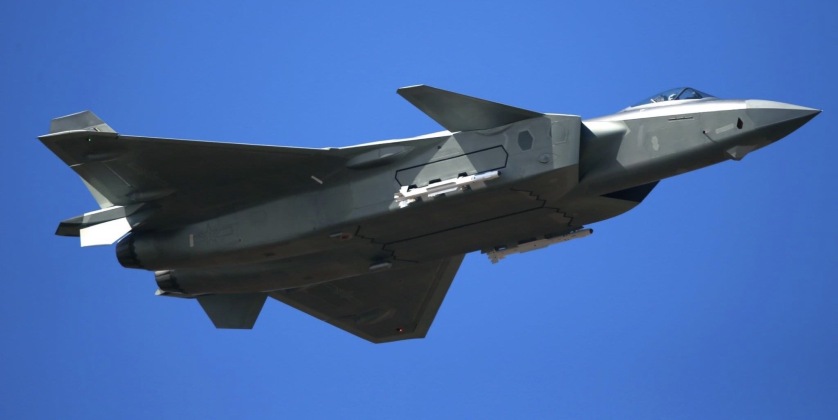News
Thrust Vectoring Engines For China’s J-20 Stealth Fighter: New Footage Shows Unprecedented Manoeuvrability
New footage released of China’s J-20 fifth generation fighter has shown the aircraft performing unprecedentedly complex and strenuous low speed manoeuvres, drawing speculation that production aircraft may have begun to integrate thrust vectoring engines. Many of the manoeuvres seen, including the turns made during vertical climb and the ability to glide while nose up, are thought to only be possible with thrust vectoring. Providing the fighter with this capability has long been speculated and has been hinted at by pilots and officers a number of times. J-10 fighters in the Chinese Peoples Liberation Army (PLA) Air Force have benefitted from thrust vectoring capabilities for some years, and are the only single engine fighters in the world to do so. The technologies for three dimensional thrust vectoring are thought to have been transferred to Russia around 2015 as part of a contract for the acquisition of Su-35S air superiority fighters. Russia was the first country to develop fighters with thrust vectoring enhanced manoeuvrability, most notably the Su-27M and Su-37 in the 1990s which had two and three dimensional thrust vectoring engines respectively, with the first fighters with such capabilities exported to India and joining the Indian Air Force in 2002.

The J-20 is one of just two fifth generation fighters in the world both in production and fielded at squadron level strength alongside the lighter single engine F-35. The two had their first encounter confirmed in March 2022, with U.S. officers highlighting that the Chinese aircraft made a strong impression. Although its stealth capabilities provide the most significant advantages at longer ranges, the J-20 is well optimised to visual range engagements with its PL-10 short ranged air to air missiles considered among the most capable in the world and capable of engaging targets at extreme off boresight angles. The fighter’s distributed aperture systems, a feature shared only by the F-35, also allows pilots to see through their cockpits using their helmets for better situational awareness. Thrust vectoring engines, which are likely to be responsible for the J-20’s extreme manoeuvres, will complement these advantages. The F-35 by contrast lacks thrust vectoring engines and is considered one of the least manoeuvrable fighters in the world, but is well optimised to beyond visual range engagements with comparably advanced avionics and sensors to the J-20.












